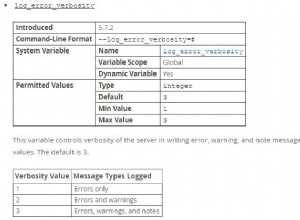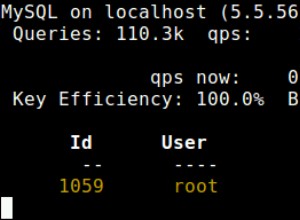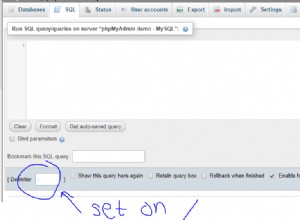To pełny przykład użycia PDO . Na przykład, możesz go ulepszyć na wiele sposobów (na przykład utworzyć pojedynczą funkcję, taką jak getDatabaseResult($query) aby ułatwić sprawdzanie wyjątków zapytań).
try{
$PDO = new PDO("mysql:host=".$db_host.";dbname=".$db_name, $db_user, $db_pass);
}
catch(PDOException $e){
die('mysql connection error');
}
// if post data is set - add new row
if(isset($_POST['content']))
{
try{
$query = $PDO->prepare('INSERT INTO contents_db (content, time) VALUES ?,?');
$res = $query->execute(array($content,time()));
}
catch(PDOException $e){
die('insert query failed');
}
}
// if last query was executed - select data
// or you can call for "$PDO->lastInsertId();"
if($res){
try{
$query = $PDO->prepare('SELECT * FROM contents_db ORDER BY time DESC LIMIT 1');
$res = $query->execute();
$res = $query->fetchAll(PDO::FETCH_ASSOC);
}
catch(PDOException $e){
die('select query failed');
}
//Outputting process to preserve line-breaks
echo nl2br($text['content']);
}




